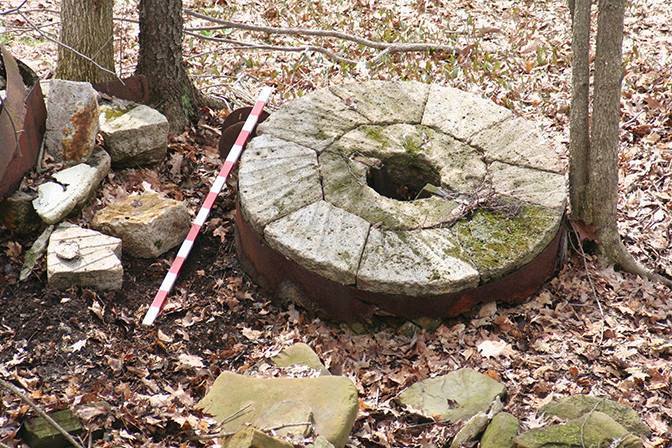Of millstones and fossilsGeology is often of great service to archaeology. The most obvious one is r
Of millstones and fossilsGeology is often of great service to archaeology. The most obvious one is reconstructing the palaeo-environment of a dig site, which takes a large team of specialists in such matters as pollen, ecology or soils. Geophysics also comes to the rescue, used to map old roads and house foundations or discover ancient buried Saharan rivers using radar. Geochemistry helps reconstruct trade routes and exchange networks using gemstones, precious metals or obsidian. Advanced analysis of teeth allows us to find out where people grew up and trace their migrations.Now fossils have come to the rescue, helping to prove that 19th century millstones used in Ohio grain mills actually came from France, as their name (French millstones) suggested. They proved the origin of the chert (known as buhr) in the Tertiary formations of the Paris Basin, those layers that rest over the famous Cretaceous chalk that forms the white cliffs of Normandy (and Dover). These rocks were instrumental in reconstructing the evolutionary developments between the fossils in the secondary rocks (up to the end Cretaceous meteorite impact and mass extinction) below and the life forms currently existing. They also proved that the sea had transgressed repeatedly onto the land, by their alternations of marine and freshwater fish, and event thought impossible at the time.Similar rocks exist in Ohio, and it was uncertain whether the name was just a moniker or reflected their actual origin. Both algae and snails proved the French origin, and the Ohio cherts turned out to be much older, dating from the late Paleozoic of 300 million years ago (compared to the less than 65 million years for the French chert). The Ohio rocks are also of marine origin, while the French ones are freshwater sediments.These stones were widely exported as ballast in ships, and manufactured in cities such as Cleveland and Cincinnati. They were preferred over the local chert because they produced fine white flour more easily. To confuse matters further, some of the millstones were made of local stone, and resemble the French product at a macro level.Past posts on geology and our human past:The king of Stonehenge’s teeth:http://tinyurl.com/pnsv2enTracing ancient gold: http://tinyurl.com/c9nba7fGeochemistry and obsidian trade routes:http://tinyurl.com/kbda4woDid Neanderthal paint in Spanish caves:http://tinyurl.com/lycavqdLozImage credit: SEPMhttp://phys.org/news/2014-06-scientist-fossils-historic-ohio-millstones.html -- source link
Tumblr Blog : the-earth-story.com
#chert#geology#france#sediment#sedimetnary#flour#ballast#history#grinding
